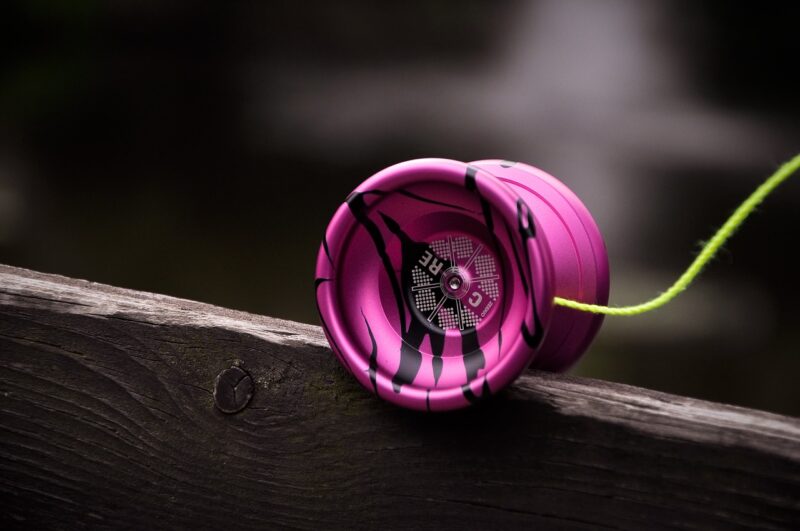How Yo-Yo Tricks Became a Secret Language in the 2000s Underground Scene
November 12, 2024

In the dawn of the 2000s, a new cultural phenomenon began to emerge from the shadows of urban landscapes across the United States and parts of the globe. It was an era characterized by rapid technological growth, the rise of the internet, and new forms of self-expression. Within this vibrant backdrop, a seemingly simple toy— the yo-yo — transcended its traditional use to become a form of art, communication, and even identity for a generation of underground enthusiasts. This article explores how yo-yo tricks evolved into a secret language within this unique underground scene.
1. The Evolution of Yo-Yo Culture
Historically, the yo-yo has a rich heritage dating back thousands of years. Its evolution into a mainstream toy peaked during the 1960s and 1980s with popular yo-yo brands, tournaments, and famous figures like Don Duncan, who popularized the toy among children. However, the late 1990s and early 2000s saw a resurgence of interest in yo-yos, primarily spurred by the emergence of new technology, particularly unresponsive yo-yos and the advent of internet tutorials.
This technological shift allowed enthusiasts to develop complex tricks that went far beyond the simple up-and-down motion of earlier generations. As a result, a new community sprouted online where individuals could share videos, tips, and innovations, creating a shared language that connected players across geography and socio-economic backgrounds.
2. The Underground Scene
As yo-yoing increased in popularity, it quickly gained traction within various underground cultures, particularly among teenagers looking for unique forms of expression. Accompanying the rise of hip-hop and skateboarding cultures, yo-yoing was embraced by youth as a way to stand out and showcase their individualism. In parks, street corners, and skate parks, young people began performing elaborate tricks publicly, drawing crowds and awe.
In this burgeoning underground space, competition, and camaraderie flourished. Influential players began to develop signature tricks, with names and styles that became widely recognized, establishing a deep connection among those within the community. The performance of these tricks conveyed not just skill but also personal stories and affinities, much like a secret handshake or code among a group of friends.
3. The Language of Yo-Yo Tricks
By the early 2000s, as videos shared across platforms like YouTube became increasingly accessible, yo-yo tricks evolved into a sophisticated language of their own. Each trick had a name, and the combinations of these tricks formed patterns akin to musical riffs or dance sequences. For example, tricks like “The Breakaway,” “The Mach 5,” or “The Brain Twister” not only indicated technical skill but also imparted cultural relevance and identity.
Participants created an entire lexicon around tricks, fostering inclusivity within the community. This language was a fantastic tool for bonding; yo-yo contests served as an avenue for friendly competition, where players would showcase their skill, much like a rap battle, demonstrating prowess through a series of increasingly complex tricks.
Furthermore, as each player gathered followers, they also contributed new tricks and phrases, leading to the ongoing evolution of this secret language, making it dynamic and inclusive.
4. Yo-Yo Tricks as an Art Form
As the underground scene continued to grow, the art of yo-yoing began to merge with other forms of performance art, including dance and visual aesthetics. Players would synchronize their tricks with music, often transitioning between styles like laid-back grooves to high-energy beats. This intersection of disciplines added yet another layer to the communication aspects of yo-yo tricks.
Competitions became showcases of not only technical ability but also creativity and self-expression. Players intricately choreographed their tricks, earning applause not just for complexity but for style and execution. Yo-yo tricks became a visual representation of personal identity—individuals could express themselves through their performance, regardless of their background.
5. The Role of Internet Communities
Websites, forums, and social spaces emerged explicitly for yo-yo enthusiasts, fostering an environment of collaboration and learning. Sites like YoYoNation helped gather yo-yo players from around the world, enabling them to share videos, tutorial resources, and advice on tricks. As these interactions increased, so did the sharing of secret techniques and tips, which could be likened to old-school graffiti artists exchanging skills.
The secret language of yo-yo tricks thrived within these communities. Just as street artists develop their unique tags and signatures, yo-yo players devised their moves and builds, creating a world where creativity could flourish freely. This virtual presence connected the diverse subcultures revolving around yo-yoing, allowing for rapid innovation in style and technical skill.
6. The Legacy and Evolution Beyond the 2000s
As the 2000s came to a close, the yo-yo community continued to grow, comprising a mix of old-school fans and fresh faces. Yo-yoing evolved from a simple hobby into a respected skill with its appearances in music videos, commercials, and even festivals. The tricks that were once whispered secrets were now widely shared, but the language of yo-yoing continues to retain a unique charm marking community belonging and identity.
As technology has advanced further, including smartphone applications for trick learning, the culture remains alive. While some may consider the essence lost due to commercialization, the heart of this underground scene persists—striving for creativity, connection, and skill.
Conclusion
The underground yo-yo scene of the early 2000s showcased how a simple object could evolve into a complex language that binds people together. Through tricks, players expressed their identities while fostering community and creativity. As we look back, we see an intricate tapestry of culture, existence, and art woven among yo-yo enthusiasts, illustrating some of the most authentic forms of communication we can have— a series of tricks and styles that resonate deeply across generations.
To this day, yo-yo tricks act as a medium to connect people whether they’re performing in skate parks or showcasing their skills online. The story of yo-yoing as a secret language remains a testament to how something as simple as a spinning toy can create bonds, convey messages, and inspire creativity throughout generations.







